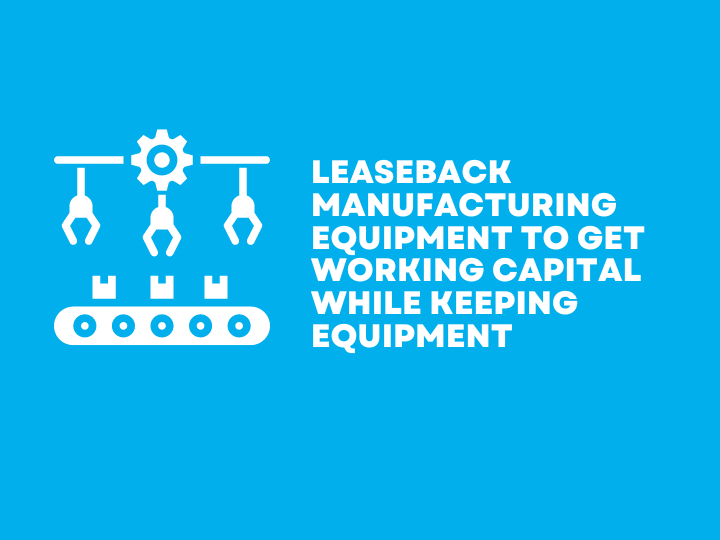If you’re a manufacturer, you know that having the right equipment is essential to your success. But what do you do when you need working capital, may have less-than-perfect personal or business credit, and have equity in your manufacturing equipment? Leaseback on manufacturing equipment might be a great solution.

One option is to leaseback your manufacturing equipment. This involves selling your equipment to a third party and then leasing it back from them. This can give you the cash you need while still allowing you to use the equipment you need to manufacture your products.
There are a few things to keep in mind if you’re considering leaseback. First, you’ll need to find an equipment sale leaseback lender that matches your equipment and industry. Second, you’ll need to submit your equipment list for review to secure the transaction. And finally, you’ll need to make sure that you continue to make payments on your equipment lease so that you don’t default on the agreement.
If you’re looking for a way to free up some cash without selling your manufacturing equipment, an equipment sale-leaseback may be a great option.
How to get a leaseback on manufacturing equipment?
As mentioned above, this is a transaction where you sell your equipment to a lender and they lease it back to you. Read more details about an equipment sale-leaseback and how it is structured.
Things to keep in mind when considering a leaseback on manufacturing equipment
A leaseback on manufacturing equipment uses the value of your equipment as collateral to determine the amount of working capital available to structure your lease. As this is not a credit qualification type of transaction, that means the personal or business credit history, financials, or tax returns are not used.
Since the lender assumes the risk solely based on the value of the equipment, businesses should expect less favorable terms than with a traditional bank. If a company has access to banking lines or the ability to get approval without using their existing equipment as collateral, the terms on those traditional transactions should be sought after first.
However, if a business needs working capital to secure a new contract, acquire additional capital, or continue operations, an equipment sale leaseback on manufacturing equipment is a great tool to use if unable to secure traditional financing.
First, find a lender that matches your equipment and industry
According to IBIS World, there are 5,131 equipment leasing companies in the US as of August 2022. With this amount of brokers and lenders in this space, there is a wide variety of credit appetites on transactions they approve. One lender may decline an equipment sale-leaseback transaction, but another may approve it. It’s important to work with the right equipment sale leaseback lender for your specific equipment type and industry to ensure approval and get the most favorable terms.
Second, submit your equipment list for review and approval
As your manufacturing equipment will determine the success of the transaction, the first step is to find the right lender to review your asset list. Based on the valuation of your equipment, industry, and the appetite of the lender, an underwriter will offer terms of the deal for consideration. If both parties agree, the transaction moves forward with inspections, documentation, and funding. You can read more about the equipment sale-leaseback process here.
Finally, make sure you continue to make payments on your equipment lease.
As with any structured payments on a loan or lease, make sure you make your payments on time. Since your lease agreement is structured to use your equipment as collateral, a default could result in a loss of your equipment. If you find yourself in a spot where you may have trouble making payments, communicate early and often with your lender.